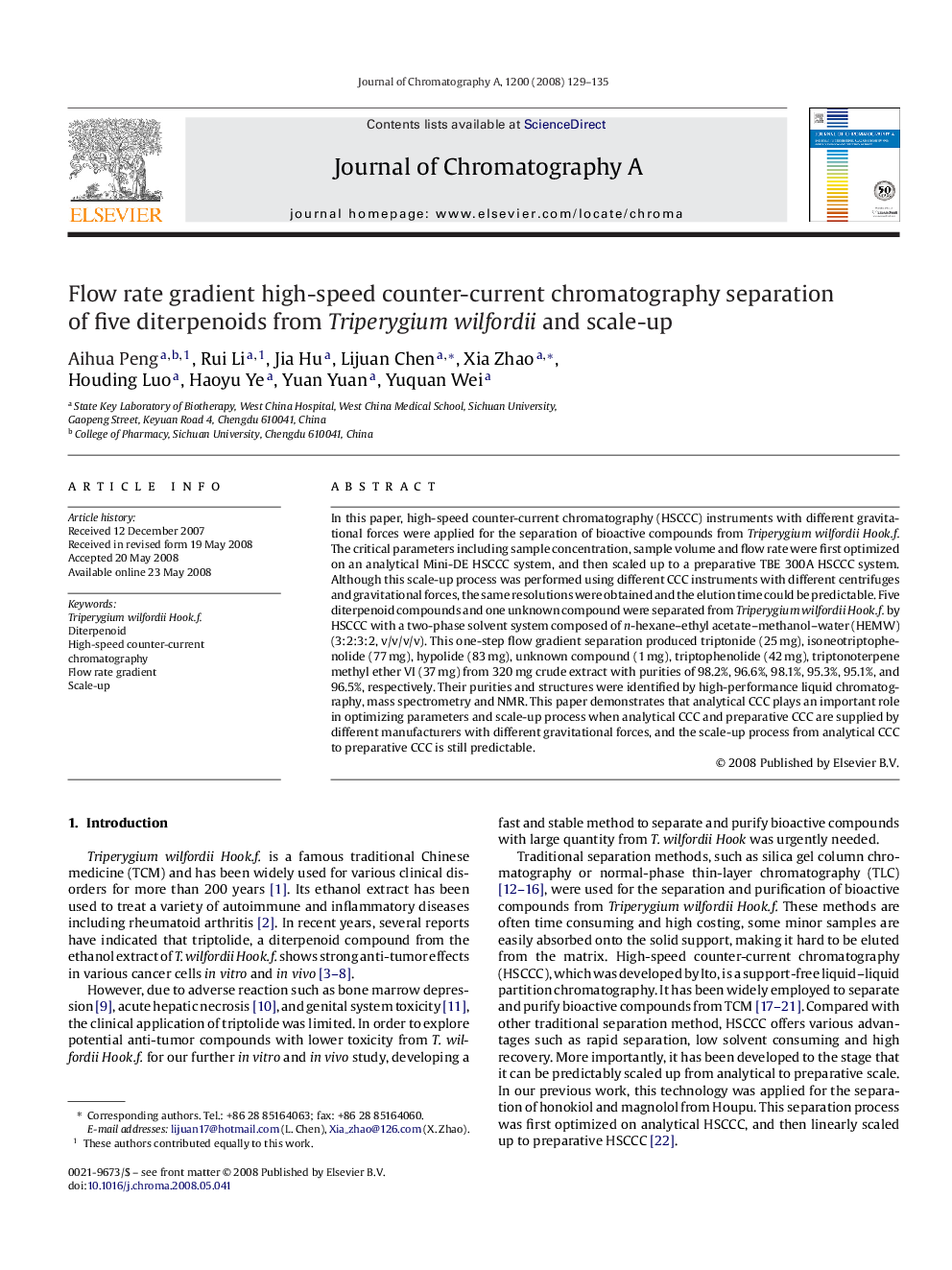| Article ID | Journal | Published Year | Pages | File Type |
|---|---|---|---|---|
| 1210917 | Journal of Chromatography A | 2008 | 7 Pages |
In this paper, high-speed counter-current chromatography (HSCCC) instruments with different gravitational forces were applied for the separation of bioactive compounds from Triperygium wilfordii Hook.f. The critical parameters including sample concentration, sample volume and flow rate were first optimized on an analytical Mini-DE HSCCC system, and then scaled up to a preparative TBE 300A HSCCC system. Although this scale-up process was performed using different CCC instruments with different centrifuges and gravitational forces, the same resolutions were obtained and the elution time could be predictable. Five diterpenoid compounds and one unknown compound were separated from Triperygium wilfordii Hook.f. by HSCCC with a two-phase solvent system composed of n-hexane–ethyl acetate–methanol–water (HEMW) (3:2:3:2, v/v/v/v). This one-step flow gradient separation produced triptonide (25 mg), isoneotriptophenolide (77 mg), hypolide (83 mg), unknown compound (1 mg), triptophenolide (42 mg), triptonoterpene methyl ether VI (37 mg) from 320 mg crude extract with purities of 98.2%, 96.6%, 98.1%, 95.3%, 95.1%, and 96.5%, respectively. Their purities and structures were identified by high-performance liquid chromatography, mass spectrometry and NMR. This paper demonstrates that analytical CCC plays an important role in optimizing parameters and scale-up process when analytical CCC and preparative CCC are supplied by different manufacturers with different gravitational forces, and the scale-up process from analytical CCC to preparative CCC is still predictable.
